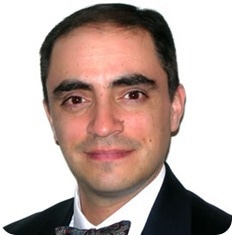
Please could you give a brief introduction to bone marrow transplants?
Bone marrow transplant (also called stem cell transplant) is a medical intervention that allows a physician to deliver very high doses of chemotherapy (if needed) but more importantly, deliver a new immune system to the patient to fight a disease (such as cancer).
For instance, if a patient has leukaemia, and I give that patient a transplant from a donor, he will get a new immune system that will fight the leukaemia, and will also get a new marrow to produce blood (the marrow is the part of the body in charge of making new blood).
In the case of patients with sickle cell disease (and related disorders) the important point is to replace the marrow that is producing defective red cells, for a new marrow that produces healthy red cells.
What exactly is a haploidentical bone marrow transplant?
Historically, in order to perform a bone marrow transplant, donor and recipient have to be 100% matched at the HLA genes level (human lymphocyte antigen). Many patients cannot get a transplant because they lack this matched donor.
But we have shown already in patients with cancer that they can receive a bone marrow transplant from a 50% match (or haploidentical). Over 90% of patients will have a sibling, child or parent that may be used as a donor and in the large majority (almost 100% but not quite) these first degree relatives will be at least 50% match. Therefore, if the patient’s sibling is not a perfect match but at last 50% may be still a good donor.
How did your work on haploidentical transplants for sickle cell disease originate?
Originally we start working on haploidentical transplants on patients with cancer (leukaemia, lymphoma, etc) at the end of the XX century – late 1990’s. Once we established that it was a safe procedure we wanted to test it in patients with non-malignant (non-cancer) conditions like sickle cell for which it is very difficult to find fully matched donors, either because their siblings are also affected, or they cannot find unrelated donors through registries like the National Marrow Donor Program. So, in these cases, a haploidentical transplant may be a good option.
How does a haploidentical bone marrow transplant eliminate sickle cell disease?
When we give new bone marrow to a patient, the donor’s immune system will allow the new marrow and immune system to establish its dominance in the recipient. Then, the donor’s marrow will start making new red cells that are healthy as opposed to those made by the sickle cell marrow.
The abnormal red cells in sickle cell cause many health problems. Once the new and healthy red cells are produced, one can expect that no new complications will develop. However, the damage already done by the sickle cell will not be reversed.
Does a haploidentical transplant always eliminate sickle cell disease or do some patients need a fully matched transplant?
We only performed a haploidentical transplant if the patient does not have a fully matched donor. But transplants do not always eliminate sickle cell. Approximately 50% of the haploidentical transplants done for sickle cell have been successful.
What are the benefits of a haploidentical bone marrow transplant?
Haploidentical transplant offers the possibility of finding donors for patients who otherwise would not be able to receive a transplant. Haploidentical donors (close relatives) are usually willing to donate and are usually readily available. It increases the pool of potential donors. In our study, a large majority of patients would not have received transplants without a haploidentical donor since they lacked a fully matched donor.
Are there any dangers of a haploidentical bone marrow transplant?
Yes, bone marrow transplant is a dangerous procedure that can be life threatening. Infections, graft-versus-host disease, organ toxicities are commonly seen after transplant and these can be very dangerous.
Are there any plans to use haploidentical bone marrow transplants for other conditions?
Currently at Johns Hopkins we have clinical trials with haploidentical transplants available for patients with blood cancers such as leukaemia, lymphoma, etc. We also have it available to patients with sickle cell disease and other haemoglobinopathies such as thalassemia. There are plans to expand to other diseases but that will be in the future.
How do you think the future of bone marrow transplants will develop?
The transplant community is actively researching ways to perform transplants with less toxic approaches, decreasing the rates of complications such as graft versus host disease. I think the areas receiving more attention now are:
- Alternative donors (such as haploidentical or cord cell grafts)
- Reduction of graft versus host disease
What plans do you have for further research in this field?
We are currently studying if increasing the number of cells infused in the graft will increase the success in patients undergoing transplants for sickle cell disease.
Would you like to make any further comments?
Despite the fact that transplantation is the only curative therapy for patients with sickle cell disease, it is not the only available option. Not all patients are candidates (either because they do not have severe enough disease or because their overall health is poor).
Where can readers find more information?
https://www.cancer.gov/
http://www.hopkinsmedicine.org/news/media/releases/half_match_bone_marrow_transplants_wipe_out_sickle_cell_disease_in_selected_patients
About Dr. Javier Bolaños Meade
 Dr. Javier Bolaños Meade is the Associate Professor of Oncology at the Johns Hopkins Sidney Kimmel Comprehensive Cancer Center.
Dr. Javier Bolaños Meade is the Associate Professor of Oncology at the Johns Hopkins Sidney Kimmel Comprehensive Cancer Center.
His expertise includes:
- Bone Marrow Transplant
- General Internal Medicine
- Graft-versus-Host Disease
- Hematologic Malignancies
His group is researching into finding novel therapies for the treatment of both acute and chronic graft versus host disease (GVHD).